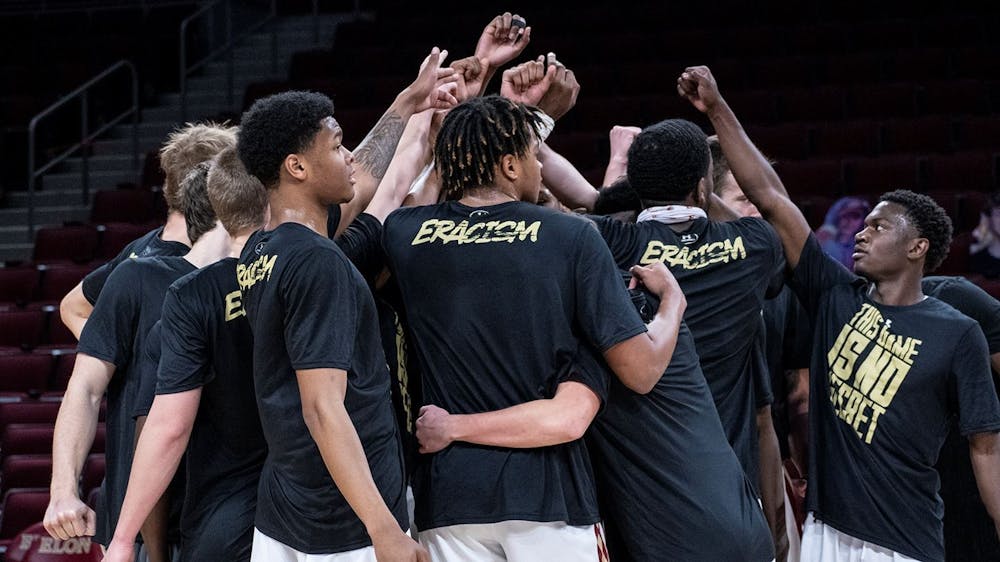Elon Athletics sent an anonymous survey to all athletes last week about diversity and inclusion in the school’s varsity athletics programs, according to Associate Director of Athletics Faith Shearer. Shearer also serves as the deputy Title IX coordinator and oversees diversity and inclusion efforts in Elon Athletics.
“One of the big focuses is going to be for us to know and be sure that we have a climate where students can feel comfortable — where they’re not afraid to be who they are 100%,” Shearer said.
This survey is part of many equity initiatives planned for Elon Athletics, which formed a diversity and inclusion advisory committee in August to promote equity within athletics. The committee is made up of athletes, coaches and administrative staff.
“Do they feel comfortable in their locker rooms?” Shearer said, listing some of the questions the survey asked. “Do they feel that they can express themselves? Do they feel that they have support in expressing themselves? Do they think that they feel comfortable having conversations about diversity and inclusion within their teams, with their coaches, with athletic staff?”
Junior football player Cole Coleman, a Black athlete, helped create the climate survey. He said the football team is a good example of a diverse and inclusive environment.
“We go out on the field, and we fight for each other, but we also come back and take the pads off, and then we fight for each other off the field as well. So I think my experience has been nothing but great support from my guys,” Coleman said.
Students sent emails to Shearer over the summer with ideas on how to create a more diverse and equitable environment. She said it was amazing to see the students so engaged in the world around them and trying to think about what they can do to make things better.
There are four subcommittees within the program: an education and development subcommittee, a policies and procedures subcommittee, a group that works to support student-athletes and a climate and assessment subcommittee.
Shearer said the subcommittees will present their findings and recommendations to Athletic Director Dave Blank and his senior staff.
“We really want to gauge sort of how open this environment is to having the kind of conversations that we need to have,” Shearer said.
Shearer said she expects the results of the survey to be in by March 1. Then, the committee will pick specific goals to accomplish based on those results.
Coleman said this survey is only the beginning.
“My hopes would be that diversity isn’t something that has to be, you know, forced upon its students any longer or has to be strived for so much or are focused on to where it would naturally be a more diverse environment.”
There are 67 Black or African American varsity athletes at Elon, and at least 26% of athletes are students of color, according to data from Shearer. There is also one Native American varsity athlete and one whose race and ethnicity are unknown. Shearer said appreciating diversity in athletics can build a team’s camaraderie.
“It’s important in life that people be able to bring their whole selves to something,” Shearer said. “And if our students feel that they can’t do that, then they’re not maximizing their potential anywhere, including the athletic field.”
Elon Athletics has already taken steps toward a more diverse and inclusive department, according to Shearer. The football team has formed a unity council. Shearer said other teams have also read books, had conversations and invited Vice President and Associate Provost for Inclusive Excellence Randy Williams and staff from one of the other identity offices on campus to facilitate conversations surrounding identity, diversity, equity and inclusion.
Shearer said educating students and creating an equitable experience for athletes once they arrive on campus is important. But the issue is out of Elon’s hands before the athletes reach the university level.
“It’s hard because students are specializing so early in their sports. There are all kinds of issues that are happening in youth sports,” Shearer said. “It’s hard for us to impact the makeup of our recruiting pool. It sort of is what it is.”


